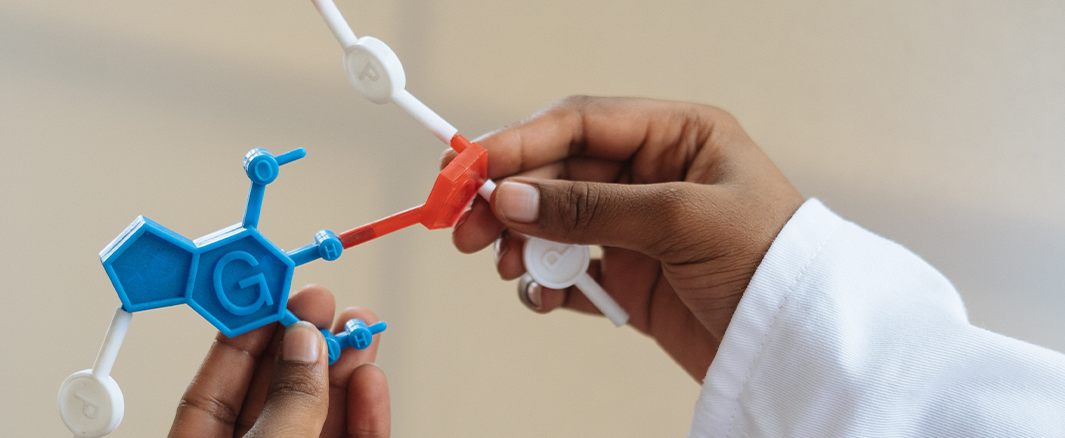

Can the biopharmaceutical industry maintain 2020’s favorable position and further boost innovative biologic and biosimilar medicines?
The launch of biologic (or biotechnological) medicines unleashed no shortage of controversy among those unfamiliar with the novel science, but the corresponding controversy surrounding biosimilar medicines was greater still. Even today, despite the passage of 15 years since their release, along with the institution of strict regulations around their use, many still question whether these medicines represent opportunities or risks. Patients, doctors and health systems are yet uncertain of the security, efficacy and cost of biosimilar medication, likely due to a lack of information and clear communication. The situation has only been exacerbated by a lack of public education regarding scientific pharma-biological scientific innovation and the value of new findings and developments. The effectiveness and safety of biosimilar and bio-comparable medicines is clear, but many have not been adequately informed of the facts.
Biosimilar and bio-comparable medicines initially saw great opposition because no clear regulations were in place to assuage safety concerns. In troubled waters, some organizations and companies focused on intellectual property rights, stressing the differences between various products. This tactic was spurred on by the name of the product itself, ‘biosimilar,’ which emphasized differences. Today, it is much more commonly known that innovative biological medicines can display a small degree of variance over time due to their development process and inherent nature, but there was a long period where lack of suitable regulation caused confusion and fear, primarily among the medical community.
The biopharmaceutical industry contributed significantly to the search for a COVID-19 treatment and vaccine. The pandemic was a historic time in which collaboration and commitment meant therapeutic options were developed in record time. Now, companies must address the changes that have occurred, harness this newly innovative environment and push through a new communication model, rewarding adjustments to human, governmental and institutional relations to ensure that all patients promptly receive treatment when they need it.
Some Background
Biologic medicines emerged in the 1980s, the product of great effort on the part of scientists and backed by major investments from pharmaceutical companies. The arrival of biologic medicines has made it possible to control and even cure certain diseases, the most recent example being COVID-19 vaccines. Biologics are produced from living organisms, and since their introduction, they have revolutionized treatment of immunological diseases, cancer, diabetes, multiple sclerosis and other rare diseases, significantly improving the lives of patients due to their heightened efficacy, speed of action and lower rate of side effects.
The medical community welcomed the launch of these new biologic medicines which were backed by science and amounted to a major development in chronic and degenerative disease treatment. Previously, treatment for such ailments was largely limited to palliative care that alleviated symptoms, but often failed to significantly improve patients’ quality of life, and never came close to promising a cure.
TThe main issue facing biologics development was, and continues to be, their cost. One mustn’t forget that to create these medicines, pharmaceutical companies invested a great deal of time and money in the research and development of each molecule, and that the manufacturing process requires sophisticated, cutting-edge technology at all stages.
Biosimilar medicines emerged in much the same way as generic medicines. When the patents for some biologic medicines expired, other companies produced similar versions and rapidly demonstrated their efficacy and safety. However, their introduction to the wider market was troubled, and even 15 years after the first biosimilar medicine became widely available, these alternative treatments still remain relatively unknown.
- Do biosimilar medicines provide an option for health systems in the wake of a devastating pandemic?
- How should the industry disseminate knowledge of biologic and biosimilar medicines and their values?
- How can the biopharmaceutical industry harness the current industry position and its newfound commitment to developing medicines and vaccines in record time?
This article will address these questions from multiple perspectives, and propose five ways for the biotechnological industry to gain widespread acknowledgement of its contributions to the post-COVID-19 environment.
What is a biologic medicine?
A biologic medicine (or simply “biologic”) is defined as one that contains one or more ingredients derived from a biological source, synthetic or otherwise, some of which may already be present in the human body. Biologics are divided into three categories: monoclonal antibodies, enzyme substitute modulators and cell surface receiver modulators. They are generally manufactured by fermentation, using recombinant DNA or other biosynthetic methods in which the manufacturing process, the cell lines used and the purification process can each impact the quality, safety and efficacy of the medicine.
WHO: Access Regulation, Safety and Efficacy Guarantee
The World Health Organization (WHO) considers improved access to biotherapeutic products, with a guarantee of their quality, safety and efficacy to be of the utmost importance. In 2014, it adopted a resolution recognizing biosimilar medicines as occupying the same niche as licensed reference products. Biosimilar medicines are usually developed after the original medicine’s patent expires, thus substantially reducing costs and improving treatment availability for patients. The WHO decreed that regulators must supervise the development of biosimilar medicines throughout their entire life cycle to ensure that only high quality biosimilar medicines that are safe and effective are available on the market. This comes with a guarantee of ability to properly evaluate quality, safety and efficacy, controlling the use of biosimilar medicines in public health systems.
Are There Differences Between Medications?
As previously stated, biologic medicines are generally derived from living organisms. This may include animal-based derivatives or byproducts of microorganisms such as yeast or bacteria. Conventional medicines are synthesized chemically using a rigid “chemical formula,” usually involving molecules neither large nor complex, leading to low production costs. Biologic medicines, due to the involvement of living organisms, require a more complicated production process.
According to the Food and Drug administration (FDA), a biosimilar medicine is a biologic product similar to the patented product that has no clinically significant differences from another biologic product already approved by the regulatory agency, known as an original biologic or reference product. Biosimilar medicines are derived from the same organic sources as the original medicine to which they are compared, are administered in the same manner, have the same concentration levels and dosages and have the same potential side effects. According to the FDA, a biosimilar medicine provides the same treatment benefits as the original biological medicine and can be considered safe and effective, as both qualities are rigorously and exhaustively evaluated prior to FDA approval.
For the European Medicines Agency (EMA), a biosimilar medicine is a biologic medicine similar to another medicine already being marketed in the EU, known as the “reference medicine.” Companies can market authorized biosimilar medicines once the market protection period for the reference medicines has been finalized. In other words, biosimilars can be distributed 10 years after the reference medicine’s introduction to the market.
“According to the FDA, a biosimilar medicine provides the same treatment benefits as the original biological medicine and can be considered safe and effective.”

Controversy vs Experience
As was discussed above, biosimilar medicines saw a much more controversial launch than the reference medicines to which they are compared, with the market newcomers’ quality, safety and efficacy being questioned. Fortunately, the industry has now accumulated more than 10 years of regulatory experience, allowing biosimilar medicines to be considered a legitimate therapeutic option benefitting both patients, who can access a wider variety of therapeutic options, and health systems, which have seen the cost of biotherapeutic treatment fall significantly.
The European Union has authorized more biosimilar medicines than anywhere else in the world, a testament to its extensive experience regarding their use and safety. In recent years, the EMA has published scientific guidelines to help biopharmaceutical developers adhere to the strict regulatory requirements surrounding biosimilar medicine authorization. These regulations have been developed so as to keep abreast of rapid biotechnological and analytical developments, and to incorporate the growing pool of knowledge that comes from more widespread use.
Clinical Studies: The Key to Differentiation
Eduardo Cioppi is Global Public Affairs Director at mABxience, a global company that manufactures biomedicines. According to him, one of the main differences between biosimilar medicines and reference biologic medicines lies in the clinical trials carried out during their development, particularly those trials’ main objective. For biologic medicines, such trials exist to prove the clinical efficacy of a product, whereas a trial for a biosimilar medicine exists to determine that said medicine’s pharmacokinetics, pharmaco-dynamics, safety and immunogenicity are comparable to the reference biologic medicine. In other words, a clinical trial for a biosimilar medicine demonstrates scientific comparability to verify that the minor differences between the reference and the biosimilar do not majorly impact the final therapeutic result.
According to Cioppi, many medications will see patent expirations in the next five years, far more than occurred in the last ten years, meaning that market opportunities for biosimilar medicines will skyrocket. Hence, many patients will benefit from access to new treatment options, while health systems will be able budget and allocate resources more effectively. He adds that “innovative biologic medicines are necessary because they leave their mark on treatment, and large corporations that invest in developing those medicines deserve those years of exclusivity to recover their investment. But once that patent runs out, they must leave room for equally safe and effective alternatives to enter the market, to which end health authorities must enact suitable regulations allowing for biosimilar medicines to thrive. In addition to being safe and effective, they are much more affordable products.”

Benefitting Patients and Health Systems While Respecting IP and Innovation
Cristobal Thompson is Executive Director of the Mexican Association of Innovative Pharmaceutical Industries (AMIIF), an industry leader with extensive experience with biotechnological medicine development. According to him, biosimilar (or bio-comparable) medicines have failed to significantly breach the market in Mexico and Latin America, compared with the USA and Europe which see more widespread use. As Thompson puts it, “there is a clear opportunity for bio-comparable medicines even while respecting the patent and intellectual property rights of innovative biologic medicines. We have seen biotechnological medicines radically change the course of disease treatments. Patients with such diseases as rheumatoid arthritis, who had been rendered immobile, have recovered movement, improved their health and quality of life and resumed their normal lives, all in a very short timeframe. I am convinced that these two types of medicine should co-exist, provided that bio-comparable medicines have been supervised and approved with the same scientific rigor as the reference biologic, since this means patients have greater access to quality treatment. This holds true regardless of manufacturer, as long as they are proven to be safe over time and have been FDA or EMA approved.”
Regarding regulation, Thompson believes current biosimilar medicine regulation to be sufficient, but with room for improvement. Indeed, certain regulations are undergoing revision to achieve international regulatory standardization, improving approval processes worldwide.
The fact remains that many doctors are somewhat hesitant to use biologic medicines due to the necessity of infusion, and it is thus imperative for companies to actively generate confidence among the medical community. To this end, all parties must be involved in communication, including supervisory bodies, doctors and patients. Patients in particular must be very well-informed on the treatments and medicines they will receive, and should have an active voice in this process.
The Patient’s Role
The International Alliance of Patients’ Organization (IAPO) emphasizes the importance of patient awareness of treatment and their accessibility. IAPO considers it paramount that patients are informed of differences in treatment using up-to-date scientific evidence. To this end, coordination with patient advocacy groups is necessary for sufficient availability of relevant data. The Coalition of Patients’ Groups Against Cancer prioritizes a more complete education of patients and advocates, with the goal of enhanced biosimilar treatment awareness. This strategy will help both patients and healthcare professionals make informed decisions regarding which medicines to use in treatment.

The Necessity of Sustainable Health Systems
The COVID-19 pandemic emphasized more than ever the pressing need to refocus health systems. Priorities must include more effective human resource distribution, greater public investment in mechanisms guaranteeing efficacy and revision of regulatory schema allowing for more rigorous investigation of alternative treatment options and new schema.
Governments are finally recognizing healthcare management as a cornerstone of life. This has presented a dilemma for various states and stakeholders, who seek to build sustainable models which optimize resource- and cost-efficiency, but which also prioritize protecting lives and providing greater health coverage. In this regard, biosimilar medicines and biopharmaceuticals create the perfect opportunity. Some health systems have already included these medicines in their treatment plans following approval from the FDA, EMA and other regulatory bodies worldwide, leading to new treatments for diseases such as cancer, Crohn’s disease, ulcerative colitis, rheumatoid arthritis, psoriasis and many others.
There is a pressing need for ever more in-depth investigation into the therapeutic value of innovative biologics, along with the safety and accessibility of biosimilars, ideally allowing treatment of a wider variety of degenerative diseases, benefitting a larger number of patients.
Challenges Facing Biologic and Biosimilar Adoption
Challenges previously discussed remain present today, most notably including a lack of education among both patients and insurers, in part exacerbated by regulations that incentivize innovation despite acknowledging both options’ values. Unfounded fears still persist regarding biosimilars’ safety and efficacy, with other issues including cost of medicines, patient access and inclusion in treatment plans.
The two primary points of contention are:
1. Regulation:Despite great progress from regulatory bodies, in many cases there is insufficient standardization to ensure widespread biosimilar availability and knowledge of innovative biologics’ benefits. In this regard, the European Union is a good role model. It has approved more biosimilar medicines than any country, using regulations which evaluate reference biologic medicines and biosimilar medicines with the same scientific rigor.
Regulatory authorities apply the same scientific criteria when evaluating both alternatives. Thus, if one medicine is approved by regulatory authorities, the efficacy and safety of both are guaranteed. However, this narrative is insufficiently clear to stakeholders, meaning it is necessary to actively build confidence among doctors, patients, policymakers and payment entities. Biopharmaceutical developers must overcome the tendency to believe that a more accessible product is an inferior one.
2. Education: Biosimilars have existed throughout Europe for 15 years now, and scientific evidence shows no significant difference between reference biologic medicines and biosimilar medicines, but misconceptions yet persist in most countries. These circumstances require manufacturers and regulatory bodies to more actively communicate the benefits of bio-therapeutic alternatives, promoting their use as one more option in a doctor’s arsenal. If effective, more communication would lead to treatment of more patients with devastating diseases, while simultaneously reducing costs to health systems, without sacrificing innovative treatments and their significant contributions to the fight against disease.
How to encourage the use of Biological and Biosimilar medicine
Six factors to drive the use of Biologial and Biosimilar and leverage the positioning of the Biophramaceutical Industry
The following are especially important angles that biopharmaceutical developers should consider to enhance use of their product and harness their industry position.
1. Confidence Generation: Expectations have significantly changed in terms of innovation, access to new medicines and public health threat response capabilities, requiring a new relationship model focused on the generation of confidence. Developers should strive to gain and retain the trust of all stakeholders, especially patients, in biologic and biosimilar medicines’ legitimacy as a treatment option. Biologic medicines represent a paradigm shift in disease treatment, while biosimilar medicines present the possibility of widespread access to high-tech medicines which improve patient quality of life and stem the impact of degenerative diseases. Industry response, and public perception thereof, will determine biopharmaceutical companies’ license to operate.
2. Audience-appropriate Narrative: When discussing biologic and biosimilar medicines, it is natural for many differing perspectives to exist, largely dependent on the information source. Particular to the biopharmaceutical industry is the need to understand the post-COVID-19 environment, in which governments and health providers are coming under pressure to reduce their budgets. Doctors will be searching for the best therapeutic option for patients, while patients themselves play a key decision making role regarding treatment plans. In this context, it is necessary to form a narrative which not only considers scientific results, but also the possibility of new alternatives. To this end, any narrative must be adapted to the reality of its target audience. Most importantly, all information regarding innovative biologic medicines and biosimilar medicines must be made available, broadly disseminated across multiple channels, avoiding information vacuums. New technologies allow for greater scope and more thorough message penetration.
3. Information Humanization: Pharmaceutical companies and doctors often discuss science, but such scientific language is often difficult for patients to understand. Patients must be able to clearly receive and internalize information regarding biological and biosimilar medicines emphasizing their ability to improve quality of life, cure diseases and save lives. Presenting the narrative from a patient’s perspective helps to humanize communication, breeding a sense of empathy and leading to interest to find out more.
4. A Digital Ecosystem for Greater Access: In order for a doctor and patient to make an informed, joint decision on how to approach treatment, both must have access to all relevant scientific information. A digital ecosystem along multiple engagement vectors can guide patients to the information necessary to take action. Digital communication, computers and mobile devices have become a fundamental part of our daily lives, and communication must always adapt to harness these new channels, formats and vectors.
5. Transparency and Clear Communication: Transparency is a must when handling information, on the part of both manufacturers and regulatory agencies. Maintaining clear positions and constant communication of any changes will generate confidence and credibility, allowing both doctors and patients to feel confident in their choice to use bio-therapeutic alternatives in treatment.
6. Prepared Spokespersons at the Ready: The necessity of an effective spokesperson is common knowledge. However, in this case it bears mentioning that, in addition to familiarity with medical and scientific angles, spokespersons have the ability to generate empathy, actively humanizing the dialogue. Conveying the right emotions can swiftly and effectively lead to action benefitting the patient.

“we need a health system which guarantees access that is universal, fair and above all sustainable.”
Conclusion
Innovative biologic medicines contribute significantly to the fight against devastating diseases, including immunological diseases, cancer and many chronic and degenerative diseases. In order for these treatments to be recognized for their value instead of simply their price, a broad communication strategy must be implemented. All involved stakeholders must be involved, with a focus on generation of contribution-based interest, which can ultimately lead to the development of further, even more effective, alternatives.
In turn, biosimilar medicines remain an option, potentially allowing an increasing number of patients to access advanced biologic therapies. To bring this potential to fruition, payment entities, doctors and patients must all have access to all relevant information and scientific evidence, allowing for informed decision making based on therapeutic benefit, safety and efficacy, ultimately improving the sustainability of health systems at large. Due to recent public health threats with which we are all familiar, now more than ever we need a health system which guarantees access that is universal, fair and above all sustainable.
Any communication project for either alternative must be based on scientific evidence, working off of a narrative foundation tailored to each audience to best highlight each treatments’ benefits. Lastly, the consultancy team responsible for this project must have extensive experience with and knowledge of the health sector, the pharmaceutical industry and the value of various treatment alternatives. If these elements are found lacking, critical communication efforts will have little or no impact on increasing the widespread use of treatments and therapies which undoubtedly improve and save lives.
Authors
Alejandro Romero
Georgina Rosell



